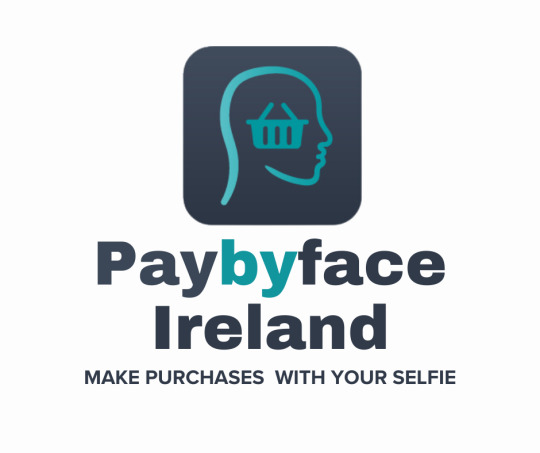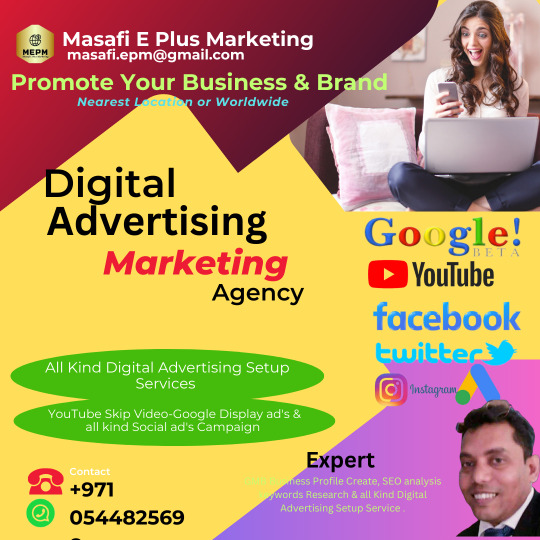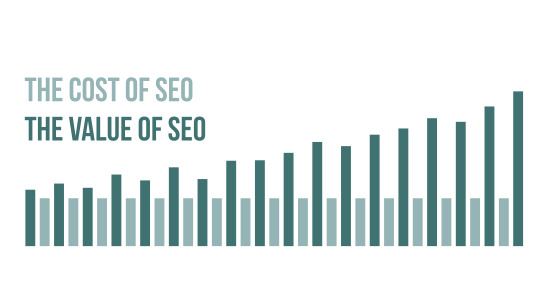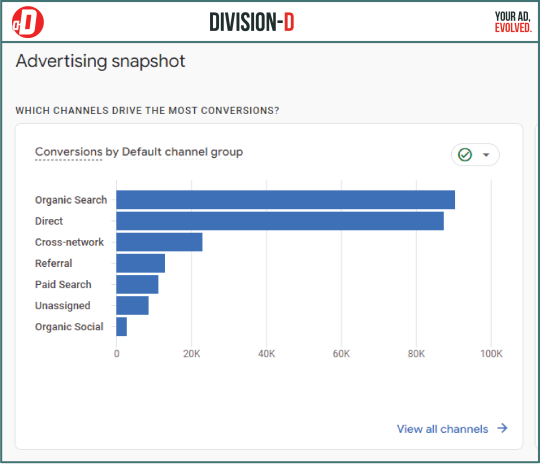#digital advertising
Photo

🪶
#原神#genshin impact#venti#genshin venti#anemo archon#archon venti#art#digital advertising#fanart#video game fanart#drawing#clip studio paint#illustration on tumblr#artists on tumblr
75 notes
·
View notes
Text
Content Marketing Strategies for the Digital Age: Engaging Your Audience Across Platforms
ntroduction:
Brief overview of the importance of content marketing in today’s digital landscape.
Introduction to the concept of engaging audiences across various digital platforms.
Understanding Your Audience
Importance of audience research and segmentation in content marketing.
Utilizing analytics tools to gain insights into audience demographics, preferences, and behaviors.
Creating Compelling Content
Crafting high-quality, valuable content that resonates with your target audience.
Utilizing diverse formats such as blog posts, videos, infographics, podcasts, and interactive content.
Tailoring Content for Different Platforms
Discussing platform-specific content strategies for social media platforms (e.g., Instagram, Facebook, Twitter, LinkedIn) and other channels (e.g., YouTube, TikTok, email newsletters).
Adapting content formats and messaging to align with each platform’s audience and features.
Implementing a Cross-Platform Content Distribution Strategy
Developing a content distribution plan to reach audiences across multiple channels.
Leveraging scheduling and automation tools to streamline content distribution workflows.
Integrating owned, earned, and paid media channels for maximum reach and impact.
Engaging and Interacting with Your Audience
Encouraging audience participation through comments, shares, likes, and user-generated content.
Responding to audience feedback and fostering two-way communication.
Implementing interactive elements such as polls, quizzes, and live Q&A sessions to increase engagement.
Measuring and Analyzing Content Performance
Tracking key performance indicators (KPIs) such as website traffic, engagement metrics, conversion rates, and ROI.
Utilizing analytics platforms to evaluate the effectiveness of content marketing efforts and optimize strategies accordingly.
Evolving Your Content Strategy
Staying updated on industry trends, platform changes, and emerging technologies.
Continuously experimenting with new content formats, channels, and tactics to keep your audience engaged and your content strategy agile.
Conclusion:
Recap of key points discussed.
Final thoughts on the importance of adaptive content marketing strategies for engaging audiences across digital platforms in the evolving digital age.
2 notes
·
View notes
Text
The Future of Digital Advertising
In the ever-evolving landscape of digital marketing, staying ahead of the curve is paramount for businesses striving to remain competitive and relevant. As technology continues to advance and consumer behaviors evolve, new trends emerge, reshaping the digital marketing landscape. In this article, we'll explore some of the most prominent emerging trends in digital marketing and speculate on what the future holds for this dynamic industry.
1.Artificial Intelligence (AI) and Machine Learning:
AI and machine learning have already made significant strides in revolutionizing digital marketing, and their influence is only expected to grow. AI-powered chatbots, personalized recommendation engines, and predictive analytics are just a few examples of how AI is transforming marketing strategies. In the future, we can anticipate even more sophisticated AI applications, such as predictive content creation, advanced customer segmentation, and dynamic pricing optimization.
2.Voice Search Optimization (VSO):
With the rising popularity of voice-activated devices and virtual assistants, voice search is poised to become a dominant force in digital marketing. Businesses will need to adapt their SEO strategies to accommodate natural language queries and conversational search patterns. Optimizing content for voice search, leveraging schema markup, and focusing on local SEO will be key tactics for brands looking to capitalize on this emerging trend.
3.Augmented Reality (AR) and Virtual Reality (VR):
AR and VR technologies have the potential to revolutionize the way consumers interact with brands and products. From immersive shopping experiences to virtual try-on features, AR and VR offer exciting opportunities for marketers to engage audiences in new and innovative ways. As these technologies become more accessible and mainstream, we can expect to see widespread adoption across various industries, including retail, entertainment, and tourism.
4.Interactive Content Experiences:
As consumers increasingly seek out interactive and engaging content, marketers are embracing interactive content formats such as quizzes, polls, calculators, and 360-degree videos. These interactive experiences not only capture users' attention but also provide valuable insights into their preferences and behaviors. Moving forward, we can anticipate the continued growth of interactive content as brands look for creative ways to stand out in a crowded digital landscape.
5.Privacy and Data Protection:
In light of increasing concerns about data privacy and security, consumers are becoming more cautious about sharing their personal information online. As a result, there is a growing emphasis on transparency, consent, and data protection in digital marketing practices. Brands that prioritize privacy and build trust with their audience will have a competitive advantage in the future, while those that neglect these considerations may face backlash and reputational damage.
6.Purpose-Driven Marketing:
Today's consumers expect more from brands than just products and services—they want to support companies that align with their values and beliefs. Purpose-driven marketing, which focuses on social responsibility, sustainability, and ethical business practices, is gaining traction as consumers seek out brands that make a positive impact on society and the environment. In the future, we can expect to see more brands integrating purpose-driven messaging into their marketing campaigns and corporate branding efforts.
In conclusion, the future of digital marketing is filled with exciting possibilities and opportunities for innovation. By embracing emerging trends such as AI, voice search optimization, AR/VR, interactive content, privacy protection, and purpose-driven marketing, businesses can position themselves for success in an increasingly competitive digital landscape. However, staying ahead of the curve requires continuous adaptation, experimentation, and a willingness to embrace change. As we look to the future, one thing is certain: the only constant in digital marketing is change.
2 notes
·
View notes
Text

Revolutionizing Payments in Europe with PAYBYFACE® Biometric Payment & Loyalty Platform.
PayByFace Offers a Unique Bio Metric Payment System, PayByFace takes Customer Loyalty to the next level. PayByFace Makes Digital Advertising Simple and effordable for Small and Large Businesses.
PayByFace continues to add to its suite of value added services included in their Ecosystem.
PayByFace, a innovative Amsterdam-based fintech start-up, announces several country based agreements and subsidiary expansions across several major European markets, including the Netherlands, UK, Ireland, France, Italy, Spain, Switzerland, Germany, Austria, Romania, and Bulgaria.
This is a significant milestone for PayByFace and its journey to both enable and scale biometric facial recognition technology adoption and in our commitment to simplify the future of check-out interactions while remaining fully GDPR compliant with the EU regulation.
PayByFace the future of payments is poised to transform the way European consumers interact with retailers at the check-out, offering unparalleled convenience, loyalty value focus, and enhanced security in the digital era.
For more information reach out to us here at PayByFace Ireland
www.paybyface.ie
#FaceRecognition #PayByFace #Biometricpayment #Futureofpayments #FacialRecognitionPayments #Securecontactlesspayments
#biometric payment#facial recognition payments#paybyface#future of payments#secure contactless payments#European payments#loyalty program#digital advertising#fintech start-up#facial recognition technology#GDPR compliant#convenience at check-out#enhanced security#customer loyalty#payment ecosystem#value added services#European market expansion#biometric facial recognition technology adoption.
2 notes
·
View notes
Text
Experience top-tier digital advertising with Excellent Publicity. We offer competitive digital advertising rates to ensure your brand's impactful online visibility.
#Digital Advertising#Digital Advertising Rates#Digital Ads#Digital Advertising Agency#App Advertising Rates
2 notes
·
View notes
Text
Super pumped to announce Chris Andrews is joining us as COO at Collective Audience.
Chris is an incredibly accomplished executive. Former advertising agency exec at Ogilvy Health and WPP leading as CTO & CIO who was part of the team that grew Ogilvy Health from $100m to $700m in revenue. He understands startups to large organizations like Ogilvy where he led 320 global tech team members.
3 notes
·
View notes
Text
What is Digital Marketing future?
Digital marketing means using digital channels, like search engines, social media, email, mobile apps, and websites, to promote a product or service. This umbrella term also includes marketing using digital devices such as TV or radio. Digital Marketing is the best way to grow all businesses as soon as possible .

#digital marketing#search engine optimisation services#social media marketing#seo#youtube marketing#facebook marketing#social media management#digital advertising#social media marketing agency
3 notes
·
View notes
Text

#bollywood party dress#digital ads#digital marketing#digital advertising#ads#social media ads#social media advertising
2 notes
·
View notes
Text
How to Boost Your Online Presence with Digital Marketing
Discover effective strategies to enhance your online presence through digital marketing. Boost visibility, attract customers, and drive growth. Learn more!
Introduction
According to recent reports, the digital advertising industry in India witnessed substantial growth, reaching a market size of nearly 300 billion Indian rupees in the year 2022. This represents a significant leap from the market size recorded in the year 2016 source: statista.com
In today's digital age, having a strong online presence is essential for businesses of all sizes. Digital marketing offers a wide range of strategies and techniques that can help boost your online visibility, attract more customers, and drive business growth. In this article, we will explore various ways to enhance your online presence through effective digital marketing strategies.
Table of Contents
Understanding the Importance of Online Presence
Developing a Comprehensive Digital Marketing Strategy
Building a User-Friendly Website
Implementing Search Engine Optimization (SEO)
Creating Engaging Content
Leveraging Social Media Platforms
Harnessing the Power of Email Marketing
Embracing Video Marketing
Engaging with Online Communities and Influencers
Utilizing Pay-Per-Click (PPC) Advertising
Analyzing and Measuring Performance
Keeping Up with Digital Marketing Trends
Incorporating Mobile Optimization
Enhancing Customer Experience through Personalization
Conclusion
1. Understanding the Importance of Online Presence
In the digital landscape, having a strong online presence is crucial for businesses to succeed. It allows you to reach a wider audience, increase brand awareness, and establish credibility in your industry. A robust online presence also enables you to connect and engage with potential customers, driving conversions and sales.
2. Developing a Comprehensive Digital Marketing Strategy
To boost your online presence effectively, it's essential to develop a comprehensive digital marketing strategy. Start by defining your goals and target audience. Conduct thorough market research to identify the platforms and channels your target audience frequents. Then, create a roadmap that outlines the specific tactics and techniques you will employ to achieve your objectives.
3. Building a User-Friendly Website
A well-designed and user-friendly website is the foundation of your online presence. Ensure that your website is visually appealing, easy to navigate, and mobile responsive. Optimize it for fast loading speeds and ensure that the content is relevant, informative, and engaging.
4. Implementing Search Engine Optimization (SEO)
SEO plays a vital role in improving your online visibility and driving organic traffic to your website. Conduct keyword research to identify relevant keywords and incorporate them naturally into your website's content. Optimize your meta tags, headings, and alt tags with relevant keywords to enhance your website's search engine rankings.
5. Creating Engaging Content
Content is king in the digital world. Create high-quality, engaging, and informative content that resonates with your target audience. Publish blog posts, articles, videos, and infographics that provide value and address your audience's pain points. Incorporate relevant keywords to improve search engine rankings and share your content across various platforms to maximize its reach.
6. Leveraging Social Media Platforms
Social media platforms offer immense opportunities to boost your online presence. Identify the platforms that align with your target audience and develop a strong presence on them. Regularly share engaging content, interact with your followers, and leverage social media advertising to reach a broader audience. Utilize analytics tools to measure the effectiveness of your social media efforts and make data-driven decisions.
7. Harnessing the Power of Email Marketing
Email marketing remains one of the most effective strategies for nurturing leads and driving conversions. Build an email list by offering valuable incentives such as exclusive content or discounts. Segment your email list based on customer preferences and behaviors to send personalized and targeted messages. Craft compelling subject lines and content to encourage email opens and click-throughs.
8. Embracing Video Marketing
Video marketing has gained significant popularity in recent years. Create engaging and informative videos that showcase your products or services, provide tutorials or demonstrations, or share customer success stories. Publish your videos on platforms like YouTube, Vimeo, and social media channels to increase your online visibility and engage with your audience on a deeper level.
9. Engaging with Online Communities and Influencers
Active participation in online communities and collaboration with influencers can greatly enhance your online presence. Identify relevant online communities and forums where your target audience interacts and contributes valuable insights and expertise. Build relationships with influencers in your industry who can endorse your brand and expose it to a larger audience.
10. Utilizing Pay-Per-Click (PPC) Advertising
PPC advertising allows you to display targeted ads to potential customers and drive traffic to your website. Conduct thorough keyword research and create compelling ad copy to optimize your PPC campaigns. Monitor and analyze your campaign's performance regularly, making necessary adjustments to maximize your return on investment (ROI).
11. Analyzing and Measuring Performance
To continually improve your online presence, it's crucial to analyze and measure the performance of your digital marketing efforts. Utilize tools like Google Analytics to track website traffic, user behavior, and conversion rates. Monitor key performance indicators (KPIs) such as click-through rates, bounce rates, and social media engagement. Use the insights gained to refine your strategies and optimize your online presence further.
12. Keeping Up with Digital Marketing Trends
The digital marketing landscape is ever-evolving, with new trends and technologies emerging regularly. Stay updated with the latest industry news and developments. Embrace new technologies, platforms, and strategies that can help you stay ahead of the competition and maintain a strong online presence.
13. Incorporating Mobile Optimization
In the mobile-driven era, optimizing your online presence for mobile devices is essential. Ensure that your website is mobile-friendly, with responsive design and fast loading speeds. Optimize your content for mobile consumption and leverage mobile advertising to reach users on the go.
14. Enhancing Customer Experience through Personalization
Personalization is key to delivering an exceptional customer experience and fostering loyalty. Leverage customer data and analytics to personalize your website content, email campaigns, and targeted ads. Tailor your messaging to address individual customer needs and preferences, making them feel valued and engaged.
15. Conclusion
Boosting your online presence through effective digital marketing strategies is a crucial step in today's competitive business landscape. By understanding the importance of online presence, developing a comprehensive digital marketing strategy, and implementing various techniques such as SEO, content creation, social media engagement, and video marketing, you can significantly enhance your brand's visibility and attract a larger audience. Stay proactive in analyzing performance, keeping up with trends, and embracing new technologies to maintain a strong and impactful online presence.
Q1: How long does it take to see results from digital marketing efforts?
A1: The time it takes to see results from digital marketing efforts can vary depending on various factors such as the strategies implemented, target audience, industry competition, and budget allocated. In some cases, you may start noticing improvements within a few weeks, while for others, it may take several months to see significant results. But if you want to accelerate your digital presence 8 Miles Solutions is here to help
Q2: Do I need to hire a digital marketing agency to boost my online presence?
A2: Hiring a digital marketing agency can provide you with expertise, resources, and a comprehensive strategy to enhance your online presence. And companies like 8 Miles Solutions are of great help
#boosting online presence#digital marketing#online visibility#attract customers#drive growth#digital advertising#market size#strong online presence#digital marketing strategy#user-friendly website#search engine optimization#engaging content#social media platforms#email marketing#video marketing#online communities#influencers#pay-per-click advertising#analyzing performance#digital marketing trends#mobile optimization#customer experience#personalization#digital marketing agency
6 notes
·
View notes
Text
youtube
2 notes
·
View notes
Text

Unlocking Imagination: Where Dreams Turn into Creative Ads - Welcome to Dreamerz Mindz 🚀✨
.
.
.
Mail us at [email protected]
Ring us at 95179-00999
#dreamerzmindz#Google Ads#Advertisement#PPC#Benefits of ads#Business#Digital Advertising#Marketing magic#brand strategy#Marketing tips#Creative campaigns#Marketing Goa;s#Marketing Strategy
2 notes
·
View notes
Text
Finding the right Google Ads agency is paramount in the digital age, where online presence can make or break a business. It can be the difference between flourishing in a competitive market and getting lost in the noise. Targeted advertising is essential, and in the UK, where businesses are fighting tooth and nail for consumer attention, a solid Google Ads strategy is a must. So, how do you choose the perfect Google Ads agency for your business? Here's your guide.
#Google Ads#Business Marketing#Digital Advertising#Ad Agency#PPC#Paid Search#Online Marketing#Marketing Strategy#Google Ads Management#Business Growth#Koobr
2 notes
·
View notes
Photo

Dark element character sheet (2)
This is something I want to keep to mostly in the comics unless of course I have a great idea to make these things fair for everyone, I dunno if I will make much of this au, sense I mostly make stuff for the human au right now.
#dark element#element#element au#element dark#character sheet#medibang paint#digital advertising#digital drawing
3 notes
·
View notes
Text

Vashishat web design agency is premier agency in Rohini. We have professional team for creating websites. we create all types of websites. Ecommerce websites, Business websites, Personal websites, etc. we have been providing solutions to clients across the India for over 2 years and boost of our extensive projects. and we have social media marketing facilities. Vashishat web design agency serving as India leading web design agency since 2020.
3 notes
·
View notes
Text
How To Forecast and Calculate the ROI of SEO (With Template)

March 22, 2023
By: Dan Ansaldo, SEO Specialist
With the continued rise of AI and ChatGPT, constant algorithm updates, and the never-ending goal of beating the competition, understanding the ROI (return on investment) of SEO has arguably never been more important.
How do you know if your SEO is effective? How can you determine if it’s going to create positive ROI? Is it even possible to forecast like other marketing channels?
These are critical questions to ask and answer. Let’s dive in!
What is the ROI of SEO?
Return on Investment (ROI) is the monetary gain you receive from investing in Search Engine Optimization (SEO). The goal of SEO — and all marketing efforts for that matter — is to earn you (or your client) more money than what you spend.
When you receive more website traffic, conversions, and ultimately leads and sales from your SEO efforts, that’s the positive return coming into effect.
While SEO is very effective, and arguably the most effective digital marketing channel long term, it’s complicated to understand — especially when calculating SEO ROI or forecasting potential ROI.
So can it be done? Yes, but it can be a bit cumbersome at times.
Why It’s Important To Determine the ROI of SEO
Like any other business investment, it's crucial to determine the impact of your SEO campaigns. Understanding the effect is key to making the most of your SEO efforts. If left in the wrong hands, SEO can become nothing more than an expensive housekeeping service for your website.
But when in the right hands, a thorough SEO strategy can be a powerful tool that sets you (or your client) up as an authority in the industry and attracts invaluable, converting website traffic. Being cognizant of the cost and conversions stemming from SEO helps you better understand the impact SEO is having.
How To Calculate The ROI Of SEO
Calculating the ROI of SEO for Ecommerce sites is different from lead generation sites. No matter what kind of business you operate, this process starts with conversion tracking and a solid look at your Google Analytics account, so have that handy before moving on.
Identify Your SEO Expenditures
First, you need to identify your SEO expenditures. If you hired a freelancer or an agency to do your SEO for you, this is simple. Your SEO cost is the price you pay the freelancer/agency each month.
If you’re doing SEO in-house, you need to take all of the following into consideration:
Software/tools: Whether it be cloud-based or downloaded on your computer, every successful SEO needs their tools. Moz, Semrush, Surfer, Screaming Frog, ContentKing…the list goes on and on.
Content Production: If you have a copywriter in-house, calculate the time (and cost) it takes them to write each article. If you outsource, how much do you pay for your content?
Editing and Plagiarism: Do you use Grammarly or Hemmingway to edit your articles? How about running through CopyScape to check for plagiarism? These may be small costs, but they all add up.
Graphics: If you use graphic or image software like Canva, Adobe, or iStock, you’ll want to account for these.
Misc: There are other SEO-related costs that can come up (speed optimizations, citation building, etc.), so make sure you track them all to make your ROI calculations as accurate as possible.
Set Up Conversions for Ecommerce Sites
The first thing you need to do for your Ecommerce site is set up conversions in Google Analytics. This allows you to capture the conversions occurring on your site. Once Ecommerce tracking is set up, you can see the overview of your sales data by going to the Conversions tab on the left navigation panel, then Ecommerce, then Overview if you still have Universal Analytics.
This is what that looks like:

Remember, Google is putting Universal Analytics to rest for good, so switch to GA4 as soon as possible if you have not done so.
If you are using GA4, then you would go to Reports, then Monetization, and finally Ecommerce purchases. Below is an example of Google’s online store. The chart and data will automatically sort by items viewed, largest to smallest, but you can select items purchased to see the items that have been purchased the most for the time frame.

Now, in GA4, click on the plus sign at the top next to “Item name” to add a filter, and filter to include Session source/medium. Then click google/organic (click apply) to see conversions coming from organic search or at least partially attributed to organic search.

Set Up Conversions for Lead Generation Sites
If you don’t sell items directly on your site, it can be a bit more challenging to know how much money comes from your site. The first step you need to do is create events in your Google Analytics account and then mark them as conversions. You also need to assign a value to each conversion. Here’s how you do that:
Identify your top conversion events (form submission, “call us today” button, “get a free quote” button, etc.)
Count how many of those conversion events/leads become paying customers
Calculate the average amount of money your customers spend
Divide the total revenue by the total number of conversions to get a value per conversion.
For example, let's say 100 people clicked on your “call us today” button in a given month. If you have that selected as a converting event, you get 100 conversions.
Of those 100 people that clicked, 10 became customers and spent $6000 collectively. That means on average, each “call us today” conversion was worth $60 ($6000 total revenue/ 100 conversions).
Now you can mark the “call us today” button with a $60 value. Repeat this process for the other conversions. When you’re done, you’ll have a nice list of conversions set.

If you don’t know how many conversions you get from each event (and thus can’t calculate the value of each conversion type), you’ll have to gather data for a couple months.
From this point on, you’ll be able to see how many conversions were attributed to organic search by going to the Advertising tab.

Calculate Your ROI!
Once you have all of the above information at your fingertips, it’s time to calculate! This is by far the easiest step. Here’s how you calculate your ROI:
SEO ROI = (Revenue From Organic Conversions - Cost of SEO Investment) / Cost of SEO Investment
Time for another hypothetical. Let’s say your revenue from organic conversions in one quarter was $80K and you spent $15K on SEO services. This would be your calculation:
($80K - $15K) / $15K = 4.33
Multiple 4.33 by 100 to get your percent, and your ROI from your SEO for that quarter was 433%. Not bad at all!
How To Forecast Potential ROI from SEO
Perhaps you are not investing in SEO at the moment (you probably should though) and you’re curious about what the potential ROI could be. Or, you need to calculate it for a potential client, here’s how you would go about forecasting potential ROI.
Disclaimer: This is a forecast, not a guarantee. Since there are many moving parts to the equation, the final ROI can be different from what you calculate.
Identify the Keyword Search Volume
The first step is to go to your favorite SEO tool (like Semrush) and look at the search volume for your target keyword. If you wanted to rank for “San Francisco SEO Company,” you’d plug that into Semrush and see that it is searched about 210 times per month.

Now, multiply that number by 0.276 because that’s the average click-through rate (CTR) of the number one organic ranking position in Google. That gives us 58 (rounding up).
That means if you rank #1 for that keyword on Google, you can assume you’ll get about 58 people coming to your website from that term each month.
Multiply 58 by your average conversion rate for all of your conversion events. Remember those from earlier? To get your average conversion rate, divide the number of paying customers by the number of leads/converting events.
Using the lead generation example from earlier, if 100 people total clicked on a converting event (form submission, “call us today” button, “get a free quote" button, etc.) in one month and 7 of those became paying customers, your conversation rate is 7% (7/100 = 0.07 x 100 = 7%).
If we multiply 58 (the number of monthly assumed visitors from the keyword “San Francisco SEO Company,”) by .07 or 7% (your average website conversion rate) you get 4.06. This is the average number of MONTHLY purchasers you can expect to gain from ranking #1 on Google.
Finally, multiply 4 (round down to the whole number) by your average order value (AOV) to get the potential income from that keyword on a monthly basis. For instance, if your average customer spends $5K monthly (not too bad for an SEO company) then your potential monthly revenue if you rank #1 for “San Francisco SEO Company” is about $20K (4 x $5K).
Annually that would be over $243,000 from a single keyword. Now do you see why SEO is so valuable?
Here is the ROI forecasting spreadsheet you can use to calculate the potential SEO ROI
Need Help With SEO?
If you need help with your SEO — as a business owner or an agency — shoot us a message. Whether you’re an Ecommerce business or a lead generation business, we can help you (or your client) gain visibility in the SERPs and take advantage of the compounding power of SEO.
READ OUR LAST ARTICLE: 5 Tips For Your Next Influencer Campaign
3 notes
·
View notes